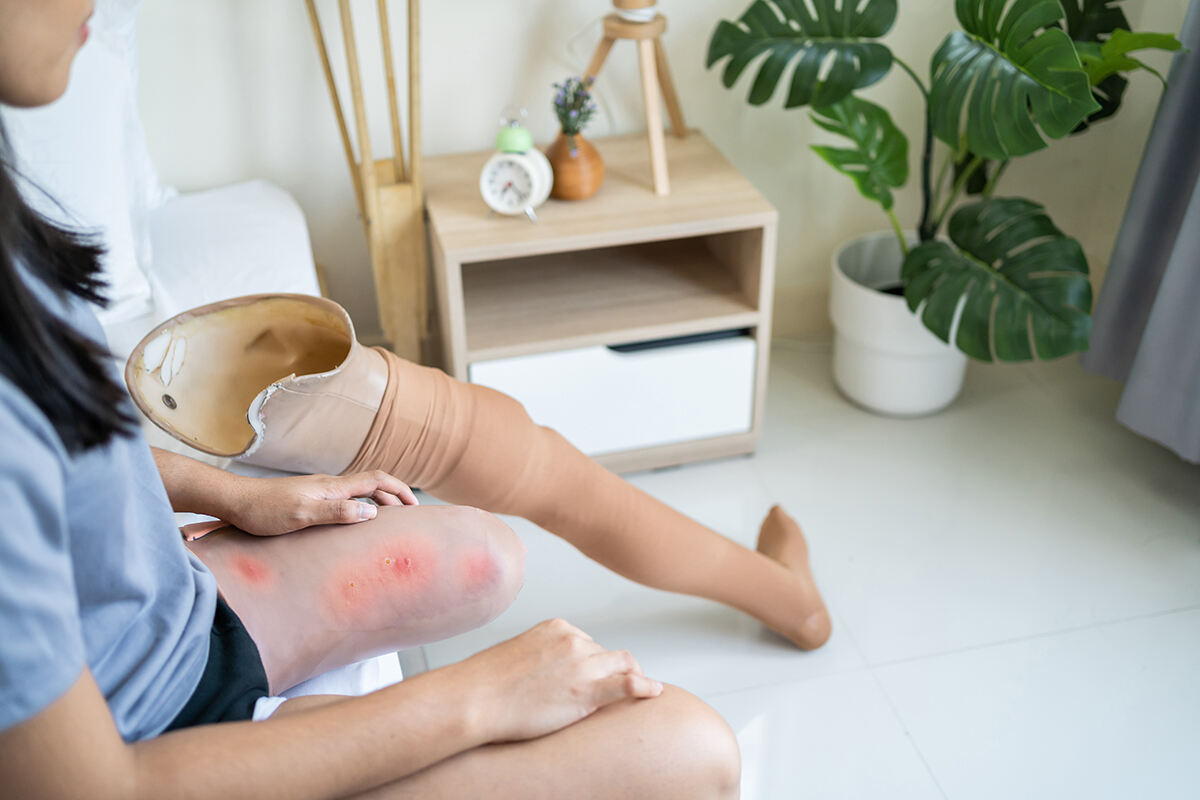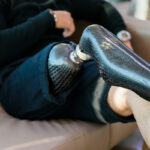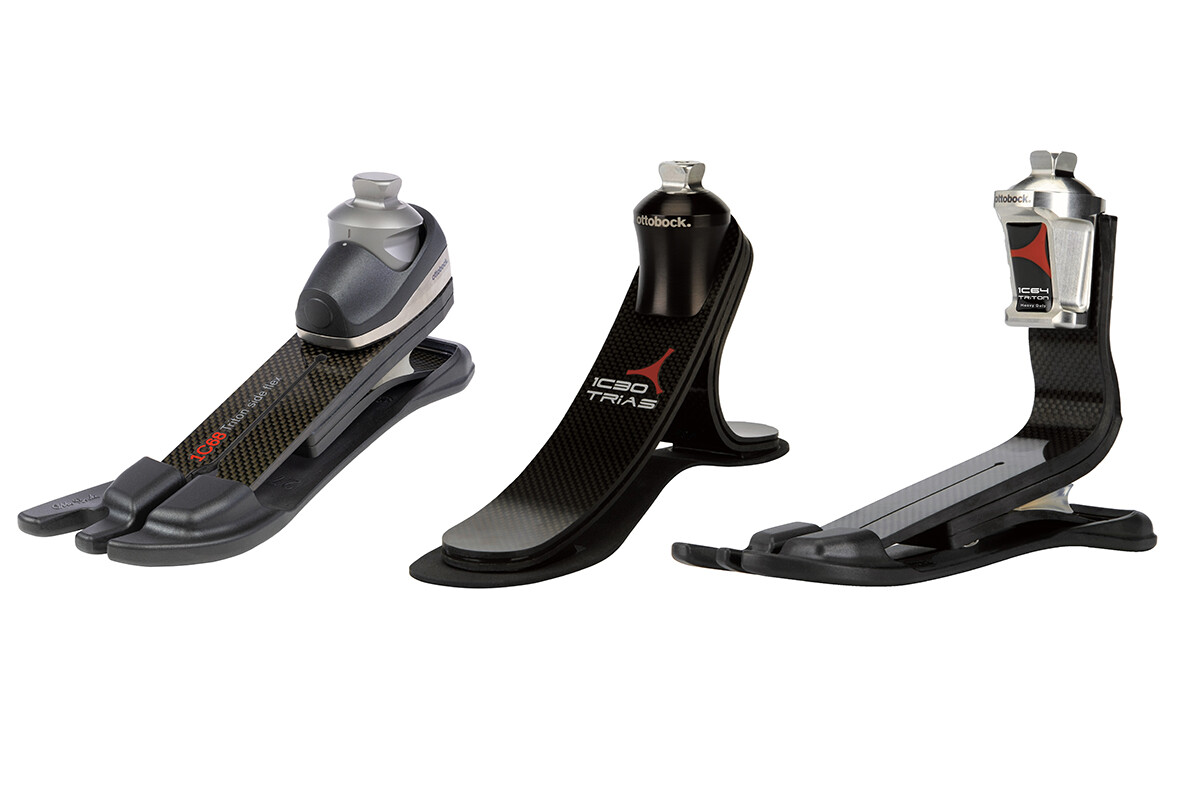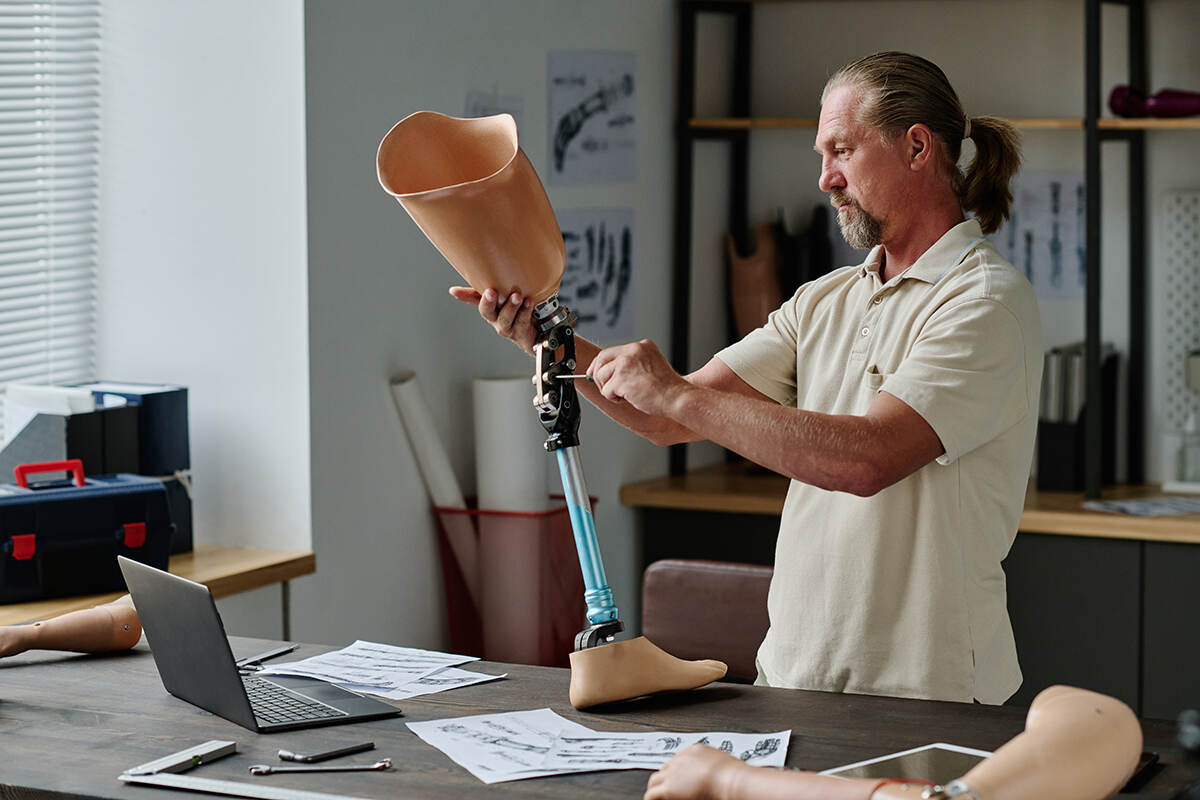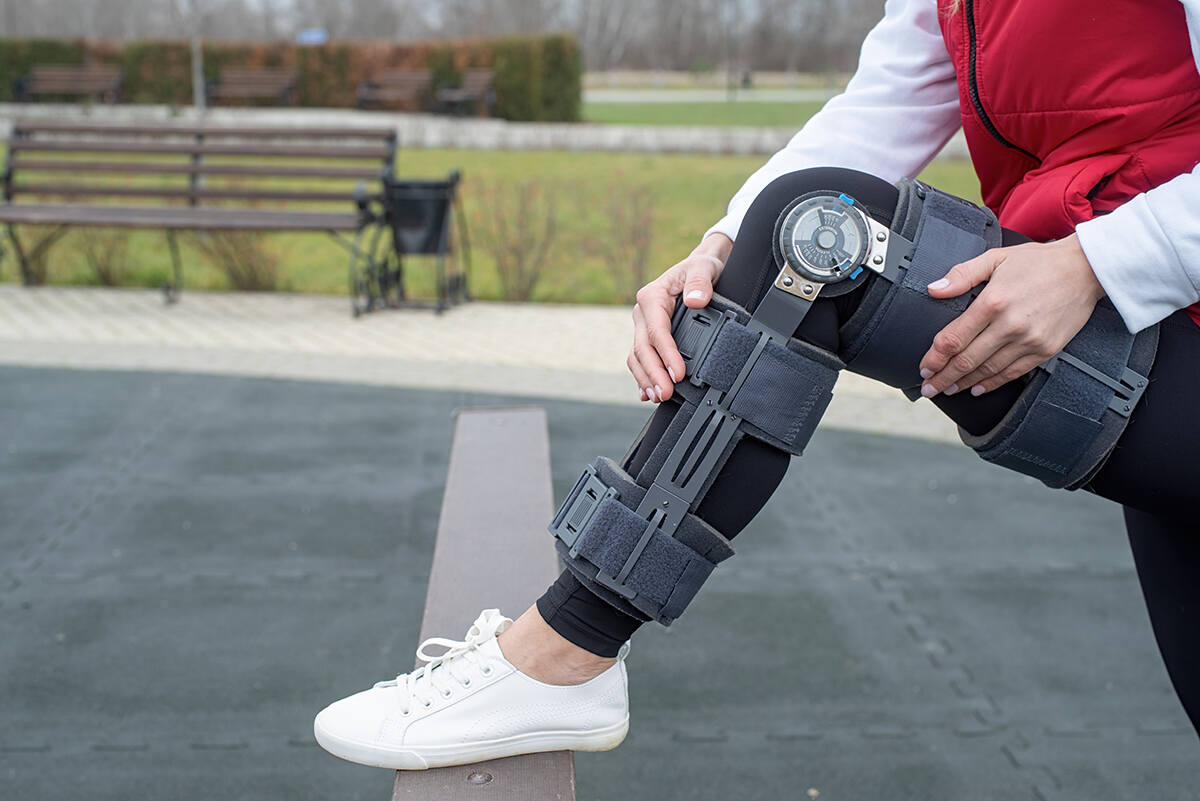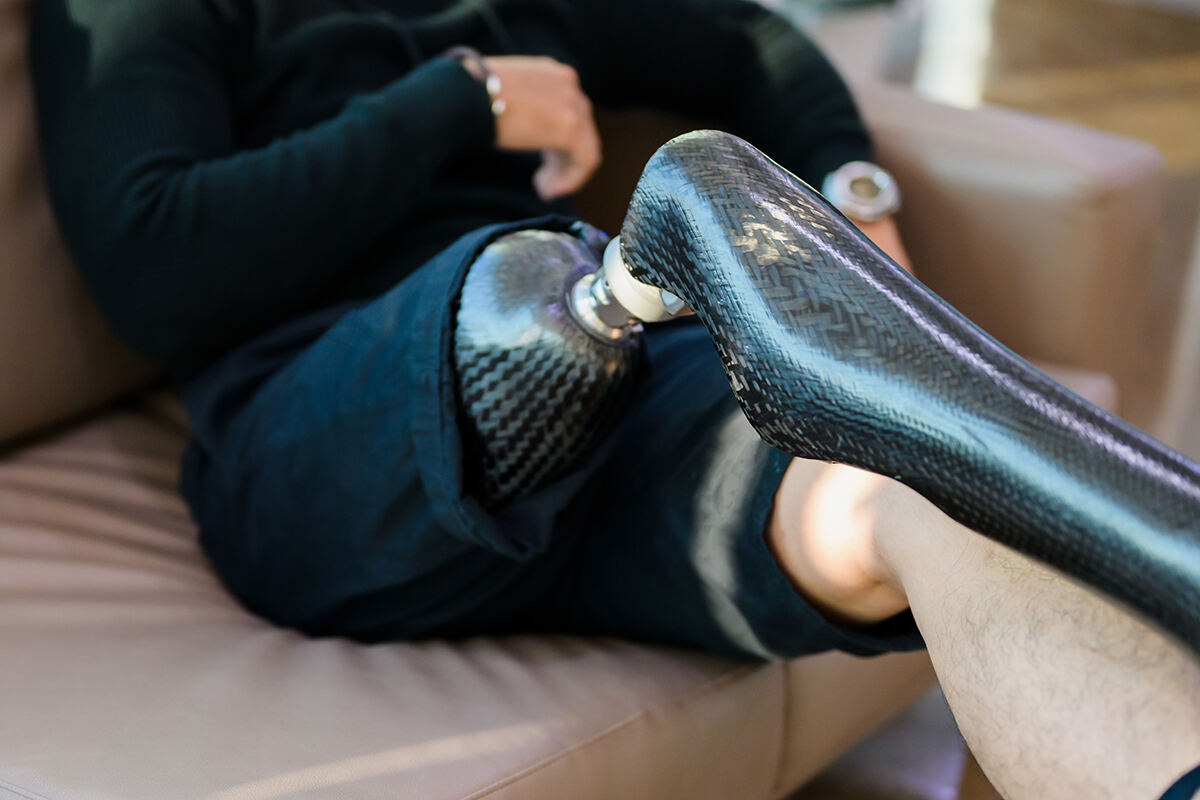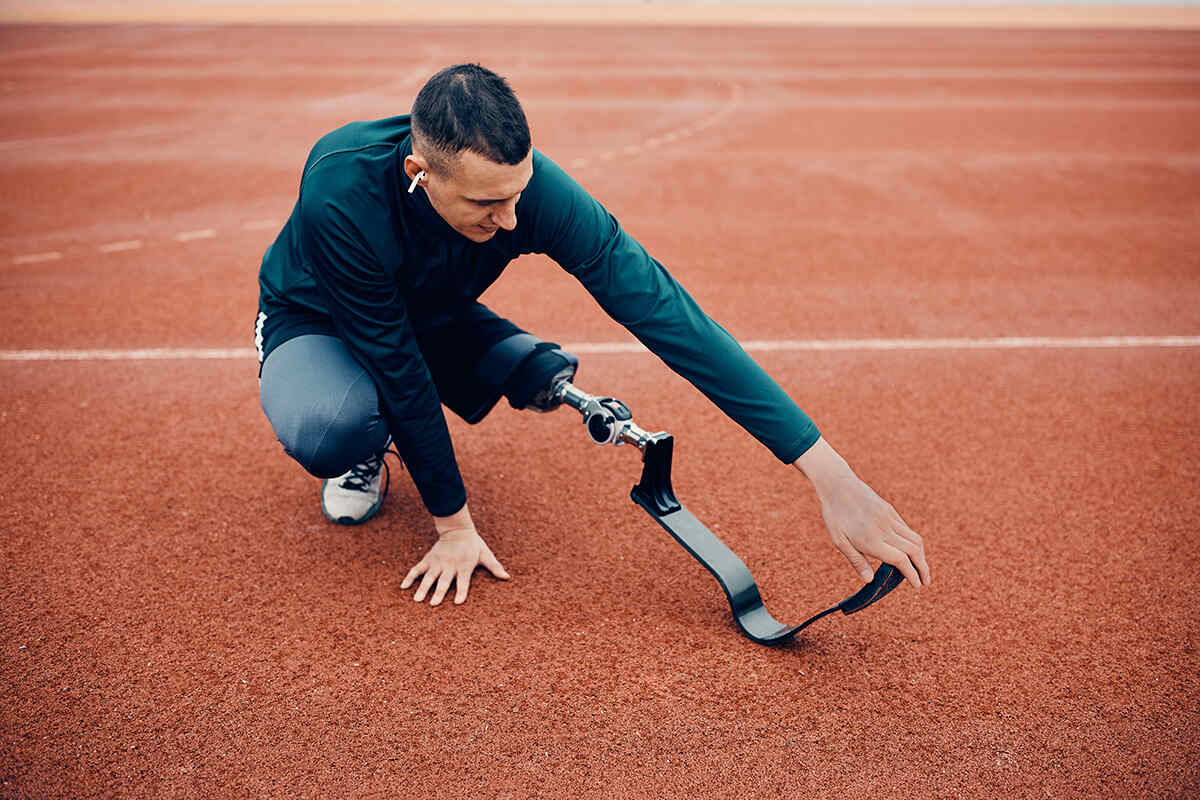As an amputee, maintaining the health of your residual limb skin is of utmost importance. Proper care can significantly impact your overall well-being and prosthetic functionality. Are you ready to learn how to keep your skin healthy and avoid amputee skin problems? This comprehensive guide will provide valuable information on residual limb skin challenges, maintaining skin integrity under prosthetics, managing sweat-related skin issues, addressing friction and pressure points, and much more.
Key Takeaways
- Understand residual limb skin challenges and take a proactive approach to care.
- Maintain skin integrity through proper cleansing, moisturizing, and regular inspection.
- Combat sweat-related issues, adjust prosthetic fit for comfort, use preventative measures & treatments for common conditions in amputees.
Understanding Residual Limb Skin Challenges
Lower limb amputees face unique skin challenges due to the constant contact with their lower limb prosthesis. The residual limb skin is subject to friction, pressure, and perspiration, all of which can result in skin problems such as irritation, breakdown, and even serious infections. Moreover, major limb amputations can lead to issues like excessive distal tissue, loose skin, thick scars, and bone exostoses, which can further complicate prosthetic fitting and increase the risk of skin disease. In some cases, peripheral vascular disease may also contribute to the challenges faced by lower limb amputees.
Recognizing the difficulties and potential complications related to residual limb skin is the initial step towards effective skin care. Adopting a proactive approach to your skin care routine and collaborating with your healthcare team can forestall issues and guarantee prompt resolution, contributing to the health and comfort of your skin.
Maintaining Skin Integrity Under Prosthetics
Maintaining skin integrity under prosthetics necessitates adherence to appropriate cleansing techniques, regular moisturizing, and vigilant inspection of skin for signs of irritation or damage.
Subsequent sections will explore each of these fundamental practices in detail, discussing their role in preventing skin breakdown and other prosthetic-associated issues.
Proper Cleansing Techniques
Maintaining healthy skin on your residual limb necessitates thorough cleansing. Failure to do so can result in dry, irritated skin that is more susceptible to infection. It is advised to wash your residual limb daily with a mild soap or detergent and rinse it completely to remove any soap residue. Some suitable soaps for amputees include pH-balanced prosthetic cleansers, gentle dishwashing soap (such as Dawn), and mild soaps with a pH-neutral formula.
When cleansing your residual limb, follow these guidelines:
- Avoid using harsh chemicals, such as bleach, alcohol, and scented soaps, as these can cause irritation or dryness.
- Opt for gentle products that are specifically designed for sensitive skin.
- Ensure that you rinse thoroughly to keep your skin clean, comfortable, and irritation-free.
Moisturizing Strategies
Another fundamental aspect of residual limb skin care is moisturizing. Employing prosthetic-specific moisturizers and lubricants can help maintain hydration and ensure skin health. Some highly-rated prosthetic-specific moisturizers include:
- Amputee Essentials Resilience Ultra-Rich Moisturizer
- Amputee Essentials Prosthetic Moisturizer
- Neutrogena Norwegian Formula Fragrance Free Hand Cream (recommended by prosthetists)
It is recommended that you moisturize the skin beneath the prosthetic daily, preferably after cleansing. When selecting a moisturizer, look for ingredients that are light, non-greasy, and water-based. Additionally, choose a moisturizer that is hypoallergenic and skin-friendly to soothe and hydrate sensitive skin. Some moisturizers may also contain antibacterial and antifungal ingredients to prevent infection and cracked skin.
Regular Skin Inspections
Regular skin inspections are pivotal for the early detection of potential skin issues and the upkeep of overall skin health. It is recommended that you inspect your skin daily in the morning and evening, using a mirror if necessary. Pay attention to any changes in skin temperature and color, and check the skin after removing the prosthesis.
During your daily skin inspections, look for signs of irritation or harm on your damp skin, such as potential indicators of a bacterial infection:
- Redness
- Swelling
- Blisters
- Open sores
If you notice any of these issues, consult with your healthcare professional to address the problem promptly and prevent further complications, such as a serious infection.
Combatting Sweat-Related Skin Issues
Sweat-related skin issues, such as irritation, chapping, and skin disorders, can be a concern for amputees due to the close contact of their residual limb with the prosthetic socket. To manage these issues, consider using antiperspirants, sweat control textiles, and specialized prosthetic socks to minimize moisture buildup.
Examples of antiperspirants include Maxim Clinical Strength Antiperspirant, Alps Prosthetic Antiperspirant Spray, and SweatBlock Wipes. Sweat control textiles, such as sheaths and prosthetic socks made of sweat-control materials, can help absorb heat and moisture and draw them away from the body.
Specialized prosthetic socks, like Knit-Rite Liner-Liner prosthetic sock and Swiftwick Adaptive Amputee socks, can also wick away sweat from the residual limb and keep it dry, cool, and blister-free.
Addressing Friction and Pressure Points
Choosing the Right Prosthetic Liner
The right prosthetic liner can significantly reduce friction and pressure on the residual limb, improving overall comfort and skin health. Prosthetic liners offer a better fit, greater comfort, protection from moisture and skin irritation, reduced weight, and hypoallergenic properties. Common liner materials include TPE (Thermoplastic Elastomer) liners, silicone liners, urethane liners, and copolymer liners.
Consider factors such as the level of amputation, residual limb length, unusual limb shapes, and circumference measurement while selecting a liner. Consulting with a prosthetist is essential to ensure the best fit and comfort for your specific needs. The appropriate liner can help alleviate pressure points, distribute pressure evenly, and minimize friction and chafing between the skin and socket, ultimately preventing skin irritation and discomfort.
Adjusting Socket Fit
Adjusting the socket fit can help alleviate pressure points and prevent skin breakdown, ulcers, and other complications. The appropriate fit for a prosthetic socket is one that is snug and secure, providing comfort and stability for the residual limb. If you experience pain, discomfort, or pressure on your skin, it may be necessary to adjust the fit of your prosthetic socket.
Proper socket fit can be achieved by layering prosthetic socks, wearing a stump shrinker or accommodating volume loss with gel, and maintaining a constant weight. In cases where the limb has changed significantly, a whole new socket may be required. Regularly monitoring and adjusting the socket fit can help prevent injury and ensure optimal functioning of the prosthesis.
Solutions for Specific Skin Conditions in Amputees
Targeted treatments and preventative measures can help manage specific skin conditions in amputees, such as contact dermatitis, folliculitis, and heat rash.
In the following sections, we will explore how to prevent and treat these common skin issues, ensuring the long-term health and comfort of your residual limb and other residual limbs.
Preventing and Treating Contact Dermatitis
Contact dermatitis is a skin rash caused by exposure to certain allergens or irritants. It is usually triggered by coming into contact with a foreign substance that the body perceives as harmful. In amputees, the primary cause of contact dermatitis is repeated contact of the prosthesis with the skin, which can result in chronic dermatitis, lichenification, hyperpigmentation, and itching. Preventing and treating contact dermatitis involves identifying and avoiding irritants, using anti-itch lotions, and maintaining proper skin hygiene.
To avoid contact dermatitis, here are some essential steps to follow:
- Use Polysporin® instead of Neosporin®.
- Keep the skin cool and dry.
- Avoid friction by wearing loose, lightweight clothing.
- Identify and eliminate irritants.
- Consider using a topical steroid.
- Take proper care of liners.
- Inspect the amputation stump daily.
- If you suspect an allergic reaction to a specific substance, consider patch testing to determine the allergenic substance.
Managing Folliculitis and Ingrown Hairs
Folliculitis is a common skin issue in amputees that presents as clusters of small bumps or pimples around hair follicles, often caused by inadequate hygiene of the stump or the socket, shaving the residual limb, and inflammation of hair follicles. To manage folliculitis and ingrown hairs, you can use drawing salves such as Amputee Essentials Resilience Prosthetic Salve, aloe vera gel, or ichthammol. Allowing hair growth can also reduce the incidence of folliculitis by preventing hair shafts from curling into the skin or failing to leave the skin normally.
Adjusting the prosthetic fit can further alleviate irritation and prevent folliculitis by:
- Minimizing pressure and friction on the skin
- Allowing for improved air circulation
- Ensuring an appropriate and comfortable fit that minimizes rubbing and chafing.
Remedies for Heat Rash
Heat rash is another common skin issue for amputees, particularly in warm climates or during physical activity. Remedies for heat rash include cooling off the skin, wearing loose and lightweight clothing, and using anti-chafing products to minimize friction and irritation.
Maintaining a cool skin temperature can help treat heat rash beneath prosthetics by reducing irritation and inflammation, soothing the rash, and providing relief from discomfort. Wearing loose-fitting clothing that facilitates air circulation can also help prevent heat rash. In addition, using anti-friction products such as liners and socks can further reduce the likelihood of developing heat rash.
The Role of Surgical Interventions
In some cases, surgical interventions may be necessary to address persistent or severe stump problems, such as bone spurs, neuromas, or conical shapes. Surgical revision can help address issues like excess soft tissue, scarring, ulcers, neuromas, and bone spurs, improving the overall function and comfort of the prosthesis.
A study focusing on surgical revision for stump issues post-traumatic lower limb amputation reported excellent outcomes – patients reported enhancements in comfort, functionality, and quality of life. While surgical interventions should be considered as a last resort, they can be critical in addressing persistent or severe stump issues and restoring optimal function and comfort for amputees.
Collaborative Care for Amputee Skin Health
Maintaining amputee skin health necessitates collaborative care, involving prosthetists, dermatologists, and other healthcare professionals. Prosthetists can help in selecting suitable prosthetic components, providing advice on stump hygiene, monitoring skin condition, and collaborating with other healthcare professionals. Dermatologists can recognize and manage skin diseases, propose advice on hygiene and skincare regimens, and collaborate with other healthcare professionals to provide valuable insight to the rehabilitation team.
Adopting a multidisciplinary team approach facilitates effective coordination among prosthetists, dermatologists, and other healthcare professionals involved in amputee skin care. Regular communication and collaboration can ensure comprehensive and holistic care for amputee skin health, leading to improved outcomes for individuals with limb loss.
Lifestyle Adjustments for Long-Term Skin Care
Significant contributions to long-term skin care and overall well-being for amputees can be made through lifestyle adjustments. Some key changes include:
- Practicing good hygiene
- Monitoring the skin regularly
- Minimizing excessive sweating
- Using proper skincare products
- Maintaining a healthy weight
- Staying hydrated
- Protecting the skin from excessive sun exposure
Incorporating fruits and vegetables into your diet can be beneficial for skin health. Some examples include:
- Carrots
- Cantaloupes
- Mangoes
- Dried apricots
Additionally, maintaining a stable body weight ensures the prosthesis continues to fit properly, as even small changes in weight can affect the fit of the prosthesis.
Innovations in Prosthetic Devices and Skin Care
Continuous innovations in prosthetic devices and skin care products offer new solutions for managing skin problems and enhancing comfort, thus improving the quality of life for amputees. Recent developments in prosthetic devices include:
- 3D printing of custom-designed airway stents, artificial skin grafts, and blood vessels
- Progress in myoelectric prosthetics
- Creation of more efficient control systems for prosthetic limbs
- Advancements in restoring a sense of touch to amputees
- Enhancements in dexterity and chronic pain management
These advancements are constantly improving the lives of amputees and providing them with better options for prosthetic devices and skin care products.
New skin care products specifically designed for amputees include prosthetic moisturizers with higher silicone content, such as Amputee Essentials Resilience Ultra-Rich Prosthetic Moisturizer, and ALPS Prosthetic Ointment for soothing and protecting the skin. These innovations have revolutionized the field of prosthetics and have greatly improved the overall well-being of individuals with limb loss.
Frequently Asked Questions
What is stump dermatoses?
Amputation stump dermatoses are skin diseases affecting the amputation stump after the removal of a limb. They may arise immediately after the surgery or years later and are also referred to as amputation-related dermatoses.
How long does it take for an amputated limb to heal?
Typically, it takes between four to eight weeks for an amputated limb to heal and for prosthetic fitting to begin. However, the physical and emotional adjustment can take longer and it can take up to 12 to 18 months for the scar to fully heal internally.
How do you care for an amputated stump?
It is important to keep the amputated stump bandaged, clean and dry until the stitches are removed. Wash the limb with mild soap and warm water daily and make sure it is completely dry before dressing. Check your remaining limb daily for irritation, skin breaks or redness, and wash your stump with mild unscented soap and warm water at least once a day.


